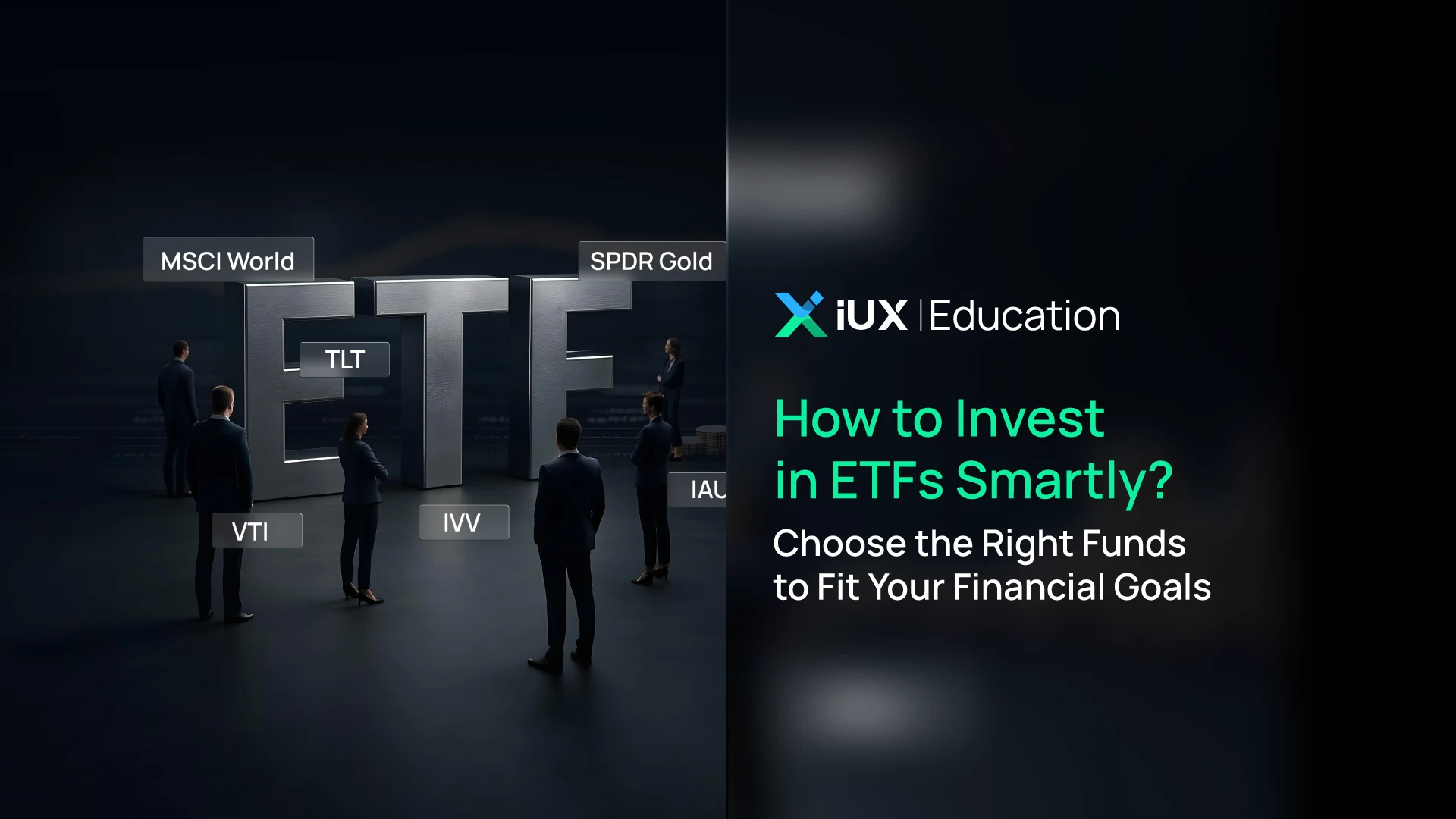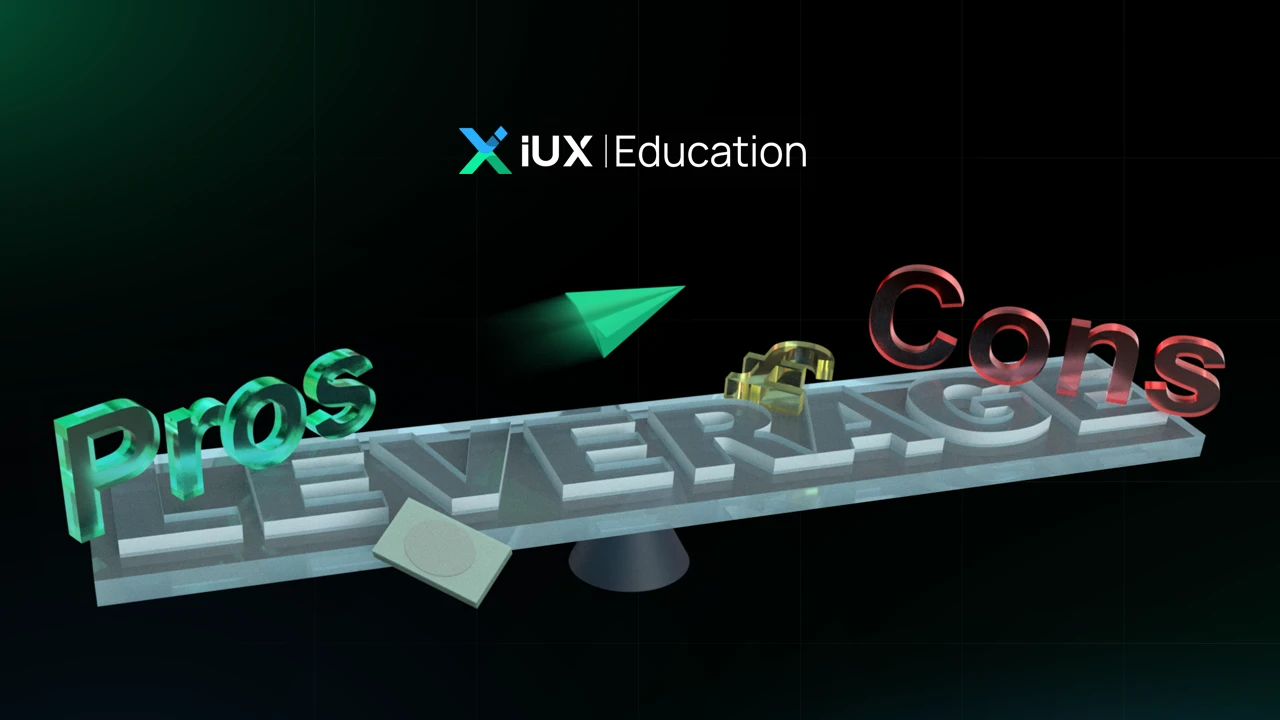CFDs are complex instruments and come with a high risk of losing money rapidly due to leverage. 76% of retail investor accounts lose money when trading CFDs with this provider. You should consider whether you understand how CFDs work and whether you can afford to take the high risk of losing your money.
CFDs are complex instruments and come with a high risk of losing money rapidly due to leverage. 76% of retail investor accounts lose money when trading CFDs with this provider. You should consider whether you understand how CFDs work and whether you can afford to take the high risk of losing your money.

How to Invest in ETFs Smartly? Choose the Right Funds to Fit Your Financial Goals
What Is an ETF? Understanding the Basics Before You Invest
An ETF, or Exchange-Traded Fund, is a type of investment fund that is listed and traded on the stock exchange, similar to regular stocks. What makes ETFs stand out is that they aim to track the performance of an index, asset class, or specific sector, such as the S&P 500, oil, gold, or clean energy stocks. The primary goal of an ETF is to deliver returns that closely mirror the performance of the underlying asset or index it tracks.
One of the key reasons ETFs are popular among investors is the ability to trade them in real-time during market hours, unlike traditional mutual funds which can only be bought or sold at the closing price of the day. Additionally, ETFs generally come with lower management fees, making them ideal for long-term investors who want to minimize overall portfolio costs.
What Types of ETFs Are There? How to Choose the Right One for You
ETFs come in various types depending on the assets they invest in. The most common categories include:
-
Index ETFs: These aim to track the performance of a broad market index, such as the S&P 500, NASDAQ 100, or MSCI World.
-
Sector/Thematic ETFs: Focused on specific industries or themes, such as technology, clean energy, or healthcare companies.
-
Commodity ETFs: Invest in commodities like gold or oil.
-
Bond ETFs: Invest in fixed-income securities, such as government or corporate bonds.
-
Dividend ETFs: Target stocks with a strong history of paying high dividends.
When it comes to choosing the right ETF for your portfolio, it all depends on your financial goals, risk tolerance, and long-term investment strategy.
What Financial Goals Are a Good Fit for ETF Investing?
ETFs are a flexible investment option that can support a variety of financial goals, such as:
-
Long-Term Investing for Retirement: Focus on ETFs that track major indices or offer broad market exposure across industries. Examples include the S&P 500 ETF, which covers 500 of the largest US companies, or the MSCI World ETF, which includes leading stocks from developed markets around the world.
-
Mid-Term Wealth Building: Consider thematic ETFs that target high-growth sectors like artificial intelligence (AI), clean energy, or electric vehicles. You might also look at ETFs that invest in emerging markets, such as India, Vietnam, or Brazil, where economic growth potential is high.
-
Short-Term Trading or Speculation: For those looking to capitalize on short-term market movements, ETFs that invest in highly volatile assets like gold or oil can offer opportunities—but come with higher risks.
How to Invest in ETFs Effectively for Both Short-Term and Long-Term Goals
One of the most popular strategies for maximizing the benefits of ETF investing is Dollar-Cost Averaging (DCA). This approach involves investing a fixed amount of money into ETFs at regular intervals—such as monthly—regardless of market fluctuations. Over time, this helps reduce the impact of market volatility and lowers the average cost per share.
Another key strategy is Asset Allocation, which means diversifying your portfolio by investing in different types of ETFs—such as equities, bonds, and commodities like gold. This helps spread risk across various asset classes and makes your portfolio more resilient to market swings.
Additionally, it's important to choose ETFs with a low expense ratio, as lower management fees can significantly improve your long-term returns. It's also wise to select funds with substantial assets under management (AUM)—preferably over $100 million—to ensure good liquidity, stability, and lower costs over the long run.
A good investment strategy can increase your chances of generating strong returns—but what many overlook is the importance of the investment platform itself, which plays a key role in managing costs, convenience, and overall portfolio efficiency.
IUX is a platform specifically designed for ETF investors. It’s easy to use, offers low fees, and provides access to a wide range of ETFs from around the world—whether you’re investing in equity ETFs, alternative assets, or gold. With built-in analysis tools, you can confidently plan your asset allocation and manage risk effectively.
Start your DCA journey or build a long-term, diversified portfolio with ETFs—easily and efficiently—on IUX.
Sign up today and let every investment you make grow wisely through every market cycle.
How to Choose the Right ETF for Your Investment Style
-
For Beginners:
Start with popular Index ETFs, such as those tracking the S&P 500 or MSCI World Index. These ETFs offer broad market diversification, are easy to invest in, and are well-suited for long-term investing.
-
For Investors Seeking Specific Opportunities:
Consider Thematic ETFs that focus on emerging sectors you believe in, such as clean energy, AI technology, or other industries with strong growth potential.
-
For Dividend-Focused Investors:
Look for Dividend ETFs that invest in strong, stable companies—such as utilities or energy firms—that have a history of paying consistent dividends. These ETFs are ideal for investors seeking regular income streams.
Keep in mind that investing in an index-based ETF doesn’t guarantee returns that exactly match the index. Always check the ETF’s tracking error, which shows how closely the fund’s returns match its benchmark. The lower the tracking error, the more accurately the ETF mirrors the index’s performance—this is generally seen as a positive sign.
Key Things to Know and Common Mistakes to Avoid When Investing in ETFs
While ETFs offer many advantages, they still carry certain risks that investors should be aware of, including:
-
Mistakenly Believing ETFs Are Risk-Free and Easy
Some investors assume ETFs are a “set-it-and-forget-it” investment with no risks. In reality, ETFs are subject to market fluctuations and require careful selection.
-
Chasing Trends Without Understanding the Fund’s Composition
Investing in ETFs just because they’re trending or tied to the latest economic buzz without analyzing the fund’s underlying holdings can lead to poor decisions.
-
Overlooking Hidden Costs
Investors often ignore hidden costs such as bid-ask spreads, trading fees, and the fund’s management fees, which can quietly erode returns over time.
-
Over-Concentration in a Single Sector
Focusing too heavily on ETFs in just one industry or theme without proper diversification can make your portfolio more vulnerable to sector-specific downturns.
ETFs are versatile investment tools that offer flexibility, low fees, and built-in diversification—making them suitable for investors of all levels. By carefully selecting ETFs that align with your financial plan, investment goals, and risk tolerance, you can build an efficient, cost-effective, and sustainable investment portfolio.
Note: This article is intended for preliminary educational purposes only and is not intended to provide investment guidance. Investors should conduct further research before making investment decisions.


